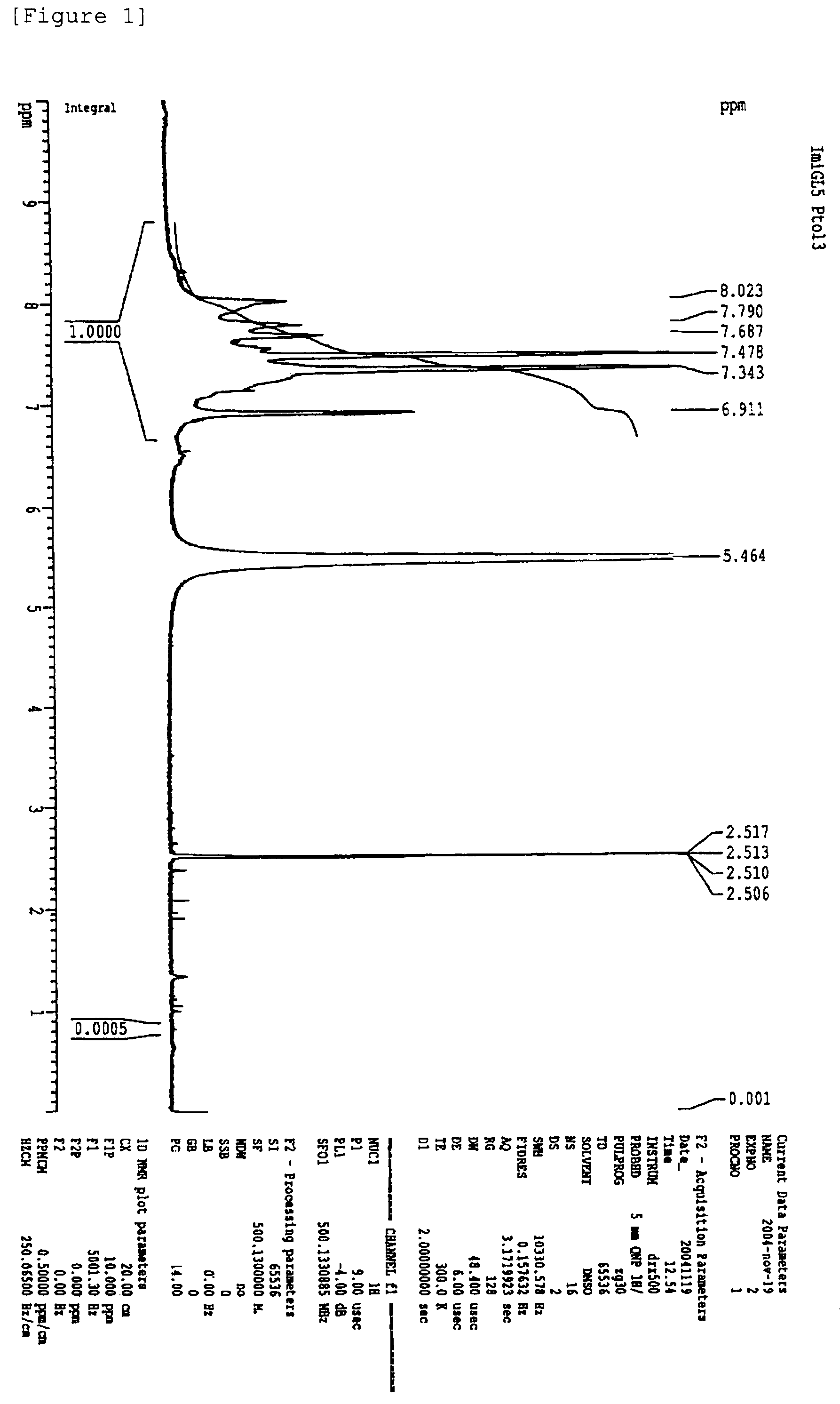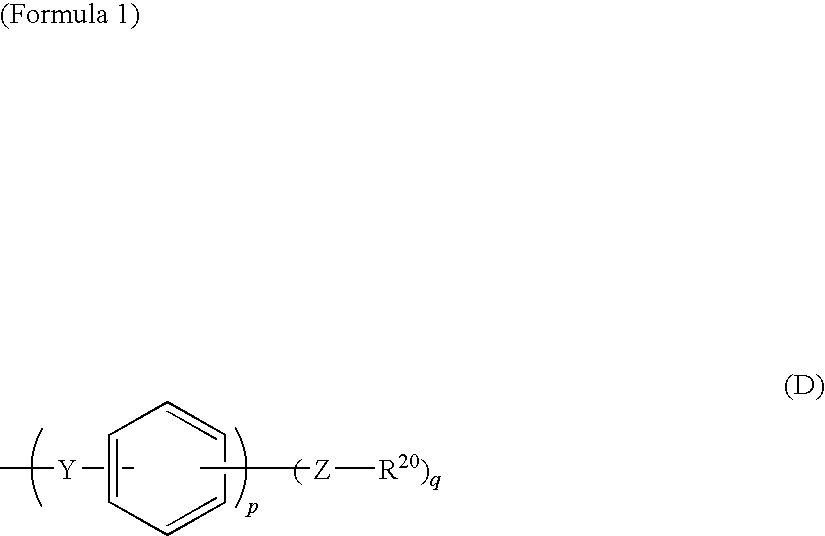Polyphenylene-containing electrode paste
a polyphenylene and electrode paste technology, applied in the field of electrolyte electrolyte, can solve the problems of difficult recovery and recycling of expensive noble metals such as platinum used as electrode catalysts, and achieve the effects of improving the output of power generation, dimensional stability and heat resistance, and excellent proton conductivity
- Summary
- Abstract
- Description
- Claims
- Application Information
AI Technical Summary
Benefits of technology
Problems solved by technology
Method used
Image
Examples
synthesis example 1
Synthesis of 2,5-dichloro-4′-(1-imidazolyl)benzophenone
[0172]
[0173]A charge of 150.7 g (0.560 mol) of 2,5-dichloro-4′-fluorobenzophenone, 114.4 g (1.68 mol) of imidazole, 100.6 g (0.728 mol) of potassium carbonate and 840 mL of N,N′-dimethylacetamide was weighed into a 2-L three-neck flask equipped with a stirrer, a thermometer, a cooling tube and a nitrogen gas introducing tube. The reaction solution was heated under nitrogen atmosphere to 110° C. for 2 hours using an oil bath. After the disappearance of raw materials was confirmed by thin layer chromatography, the reaction solution was left to cool to room temperature. The reaction solution was then gradually added to 3 L of water to coagulate a product, which was filtered. The product obtained by filtration was dissolved in THF (1.2 L), to which toluene (4 L) was added, followed by washing with brine until an aqueous layer became neutral. After the organic layer was dried over magnesium sulfate, the solvent was removed by an evap...
synthesis example 2
Synthesis of 2,5-dichloro-4′-(1-pyrrolyl)benzophenone
[0175]
[0176]A charge of 134.6 g (0.500 mol) of 2,5-dichloro-4′-fluorobenzophenone, 50.3 g (0.750 mol) of pyrrole, 76.0 g (0.550 mol) of potassium carbonate and 840 mL of dehydrated N,N′-dimethylacetamide was weighed into a 2-L three-neck flask equipped with a stirrer, a thermometer, a cooling tube and a nitrogen gas introducing tube. The reaction solution was heated under nitrogen atmosphere to 100° C. for 3 hours using an oil bath. After the disappearance of raw materials was confirmed by thin layer chromatography, the reaction solution was left to cool to room temperature. The reaction solution was then gradually added to 3 L of water to coagulate a product, which was filtered. The product obtained by filtration was dissolved in 2.5 L of toluene, which was washed with brine using a separating funnel until an aqueous layer became neutral. After the organic layer was dried over magnesium sulfate, the solvent was removed by an evap...
synthesis example 3
Synthesis of 2,5-dichloro-4′-(2-benzothiazolethioxy)benzophenone
[0177]
[0178]A charge of 269.1 g (1.00 mol) of 2,5-dichloro-4′-fluorobenzophenone, 175.6 g (1.05 mol) of 2-benzothiazolethiol, 152.0 g (1.10 mol) of potassium carbonate and 1.5 L of dehydrated N,N′-dimethylacetamide was weighed into a 3 L three-neck flask equipped with a stirrer, a thermometer, a cooling tube and a nitrogen gas introducing tube. The reaction solution was heated under nitrogen atmosphere to 110° C. for 2 hours using an oil bath. After the disappearance of raw materials was confirmed by thin layer chromatography, the reaction solution was left to cool to room temperature. The reaction solution was then gradually added to 3 L of water to coagulate a product, which was filtered. The product obtained by filtration was dissolved in 4 L of toluene. The organic layer was washed with brine until an aqueous layer became neutral. After the organic layer was dried over magnesium sulfate, the solvent was removed by a...
PUM
| Property | Measurement | Unit |
|---|---|---|
| mol % | aaaaa | aaaaa |
| mol % | aaaaa | aaaaa |
| mol % | aaaaa | aaaaa |
Abstract
Description
Claims
Application Information
 Login to View More
Login to View More - R&D
- Intellectual Property
- Life Sciences
- Materials
- Tech Scout
- Unparalleled Data Quality
- Higher Quality Content
- 60% Fewer Hallucinations
Browse by: Latest US Patents, China's latest patents, Technical Efficacy Thesaurus, Application Domain, Technology Topic, Popular Technical Reports.
© 2025 PatSnap. All rights reserved.Legal|Privacy policy|Modern Slavery Act Transparency Statement|Sitemap|About US| Contact US: help@patsnap.com



